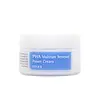What's inside
What's inside
 Key Ingredients
Key Ingredients

 Benefits
Benefits

 Concerns
Concerns

 Ingredients Side-by-side
Ingredients Side-by-side

Water
Skin ConditioningGlycolic Acid
BufferingLactic Acid
BufferingPotassium Hydroxide
BufferingGluconolactone
Skin ConditioningMandelic Acid
AntimicrobialDipropylene Glycol
HumectantPanthenol
Skin ConditioningSalicylic Acid 2%
MaskingMethylpropanediol
Solvent1,2-Hexanediol
Skin ConditioningOctyldodeceth-16
EmulsifyingCitric Acid
BufferingHydroxyethylcellulose
Emulsion StabilisingPentylene Glycol
Skin ConditioningSodium Polyacryloyldimethyl Taurate
Emulsion StabilisingCyanocobalamin
Skin ConditioningPolyacrylate Crosspolymer-6
Emulsion StabilisingHydroxypropyl Starch Phosphate
Ethylhexylglycerin
Skin ConditioningCapryloyl Salicylic Acid
ExfoliatingPolysorbate 60
EmulsifyingDisodium Phosphate
BufferingSodium Phosphate
BufferingTocopherol
AntioxidantAllantoin
Skin ConditioningHydrolyzed Hyaluronic Acid
HumectantWater, Glycolic Acid, Lactic Acid, Potassium Hydroxide, Gluconolactone, Mandelic Acid, Dipropylene Glycol, Panthenol, Salicylic Acid 2%, Methylpropanediol, 1,2-Hexanediol, Octyldodeceth-16, Citric Acid, Hydroxyethylcellulose, Pentylene Glycol, Sodium Polyacryloyldimethyl Taurate, Cyanocobalamin, Polyacrylate Crosspolymer-6, Hydroxypropyl Starch Phosphate, Ethylhexylglycerin, Capryloyl Salicylic Acid, Polysorbate 60, Disodium Phosphate, Sodium Phosphate, Tocopherol, Allantoin, Hydrolyzed Hyaluronic Acid
Cocos Nucifera Fruit Extract
EmollientButylene Glycol
HumectantGlycerin
HumectantCaprylic/Capric Triglyceride
MaskingHelianthus Annuus Seed Oil
EmollientCetearyl Alcohol
EmollientGluconolactone
Skin ConditioningNiacinamide
SmoothingBetaine
HumectantDimethicone
EmollientCetearyl Olivate
Sorbitan Olivate
Emulsifying1,2-Hexanediol
Skin ConditioningBeeswax
Emulsion StabilisingElaeis Guineensis Oil
EmollientElaeis Guineensis Kernel Oil
EmollientHydroxyethyl Acrylate/Sodium Acryloyldimethyl Taurate Copolymer
Emulsion StabilisingEthylhexylglycerin
Skin ConditioningCitric Acid
BufferingXanthan Gum
EmulsifyingSodium Hyaluronate
HumectantAllantoin
Skin ConditioningCocos Nucifera Fruit Extract, Butylene Glycol, Glycerin, Caprylic/Capric Triglyceride, Helianthus Annuus Seed Oil, Cetearyl Alcohol, Gluconolactone, Niacinamide, Betaine, Dimethicone, Cetearyl Olivate, Sorbitan Olivate, 1,2-Hexanediol, Beeswax, Elaeis Guineensis Oil, Elaeis Guineensis Kernel Oil, Hydroxyethyl Acrylate/Sodium Acryloyldimethyl Taurate Copolymer, Ethylhexylglycerin, Citric Acid, Xanthan Gum, Sodium Hyaluronate, Allantoin
 Reviews
Reviews

Ingredients Explained
These ingredients are found in both products.
Ingredients higher up in an ingredient list are typically present in a larger amount.
1,2-Hexanediol is a synthetic liquid and another multi-functional powerhouse.
It is a:
- Humectant, drawing moisture into the skin
- Emollient, helping to soften skin
- Solvent, dispersing and stabilizing formulas
- Preservative booster, enhancing the antimicrobial activity of other preservatives
Allantoin is a soothing ingredient known for its protective and moisturizingg properties. Because of this, it is often added to products with strong active ingredients.
Studies show higher concentrations of this ingredient can promote wound healing.
Though it can be derived from the comfrey plant, allantoin is produced synthetically for cosmetic products to ensure purity.
Learn more about AllantoinCitric Acid is an alpha hydroxy acid (AHA) naturally found in citrus fruits like oranges, lemons, and limes.
Like other AHAs, citric acid can exfoliate skin by breaking down the bonds that hold dead skin cells together. This helps reveal smoother and brighter skin underneath.
However, this exfoliating effect only happens at high concentrations (20%) which can be hard to find in cosmetic products.
Due to this, citric acid is usually included in small amounts as a pH adjuster. This helps keep products slightly more acidic and compatible with skin's natural pH.
In skincare formulas, citric acid can:
While it can provide some skin benefits, research shows lactic acid and glycolic acid are generally more effective and less irritating exfoliants.
Most citric acid used in skincare today is made by fermenting sugars (usually from molasses). This synthetic version is identical to the natural citrus form but easier to stabilize and use in formulations.
Read more about some other popular AHA's here:
Learn more about Citric AcidEthylhexylglycerin (we can't pronounce this either) is commonly used as a preservative and skin softener. It is derived from glyceryl.
You might see Ethylhexylglycerin often paired with other preservatives such as phenoxyethanol. Ethylhexylglycerin has been found to increase the effectiveness of these other preservatives.
Gluconolactone is a PHA. PHAs are a great gentle alternative to traditional AHAs.
When applied, Gluconolactone has the same affect on skin as AHAs such as lactic acid. It helps dissolve the dead skin cells in the top layer of your skin. This improves texture and brightens the skin.
PHAs are more gentle than AHAs due to their larger structure. They do not penetrate as deeply as AHAs and take a longer time to dissolve dead cells. Studies show PHAs do not cause as much irritation.
Gluconolactone has some interesting properties:
In a 2004 study, Gluconolactone was found to prevent UV damage in mouse skin cells and has not been found to increase sun sensitivity. However, we still recommend wearing SPF daily.
This ingredient is is an created by reacting gluconic acid with an alcohol.
Learn more about Gluconolactone